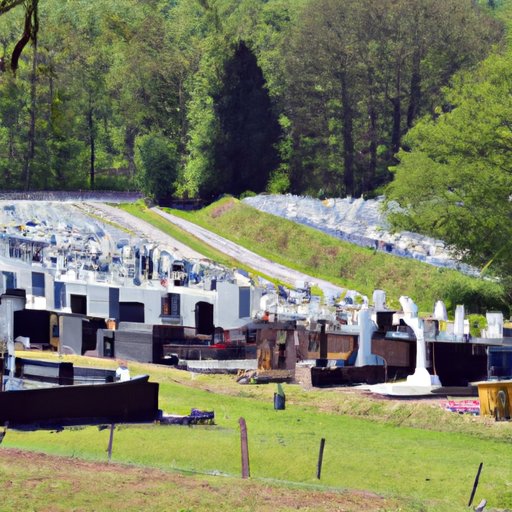
How Do Cemeteries Make Money?
Cemeteries can be a sensitive subject for many people, but they are an important part of our society. They are where we pay our respects to our loved ones who have passed away, and they often provide a peaceful final resting place. However, many people don’t understand how cemeteries make money, which can lead to confusion and frustration. In this article, we’ll explore the various revenue streams that keep cemeteries running and their impact on the industry as a whole.
A Brief History of the Cemetery Industry
The concept of cemeteries has been around for centuries, but it wasn’t until the 19th century that they became a formalized industry. As populations grew and urbanization took hold, cities began to require designated burial grounds. This led to the establishment of public and private cemeteries, which were often run by religious organizations. Over time, cremation became more popular, and cemetery regulations increased. These factors have had a significant impact on the revenue generation strategies of modern cemeteries.
Types of Cemeteries and Funding
There are several types of cemeteries, including public, private, and religious. Public cemeteries are typically owned and operated by the government, whereas private cemeteries are owned by businesses or individuals. Religious cemeteries are owned and operated by religious organizations. The funding for each type of cemetery varies significantly. Public cemeteries often receive funding from taxes or user fees, while private cemeteries rely on plot sales and maintenance fees. Religious cemeteries may receive funding from charitable donations or through the religious organization’s budget. These funding sources can significantly impact the amenities and services offered by each type of cemetery.
Revenue Streams for Cemeteries
Cemeteries use various revenue streams to stay operational. The most obvious one is plot sales, where individuals purchase a final resting place for themselves or a family member. However, there are other revenue streams that cemeteries can utilize, including maintenance fees, burial and cremation fees, and memorialization services. Some cemeteries have also started to diversify their income by offering alternative burial options like green burials or virtual memorials. These revenue streams have evolved significantly over time, with new options arising as consumer preferences change.
Endowment Funds and Charitable Donations
Endowment funds are a way for cemeteries to secure long-term funding. They work by investing donations and using the interest earned to cover operating expenses. Charitable donations can also be a significant source of revenue for cemeteries. Individuals or organizations may donate money to cemeteries to help maintain their grounds or provide additional services. However, relying on endowment funds or charitable donations can have drawbacks, including a lack of control over investments and a challenge to maintain the intended use of donated funds.
The Impact of Cremation on Cemetery Revenue
Cremation has become more popular in recent years, with about half of all deceased individuals in the United States being cremated. This trend has had a significant impact on cemetery operations. Cemeteries have had to adapt by offering niches or scattering gardens for cremated remains. This shift has also affected cemetery revenue as cremation plots are often less expensive than traditional burial plots. However, cemeteries that don’t adapt to the trend risk becoming obsolete and unsustainable.
Ethical Concerns Around Cemetery Revenue Generation
There are ethical concerns around treating cemeteries as for-profit businesses. Many people believe that running cemeteries as businesses can lead to conflicts of interest and a focus on profits over honoring the deceased. However, nonprofit entities can also have issues with transparency and accountability. There are potential solutions to these issues, including increased industry regulation and community oversight.
Future Trends in Cemetery Revenue Generation
Cemeteries will need to continue to evolve to meet changing consumer preferences and societal values. Emerging trends in the industry include green burials, virtual memorials, and more personalized funeral services. Cemeteries may need to explore new revenue streams to keep pace with these changes, such as offering virtual tours or partnering with local businesses to provide unique services.
Conclusion
Cemeteries are an important part of our society, and their revenue streams are critical to their sustained operation. We hope this article has shed some light on the various ways cemeteries make money, from plot sales to innovative new options like virtual memorials. As consumers, we can support our local cemeteries by understanding their funding and revenue sources and advocating for ethical and sustainable operations.




